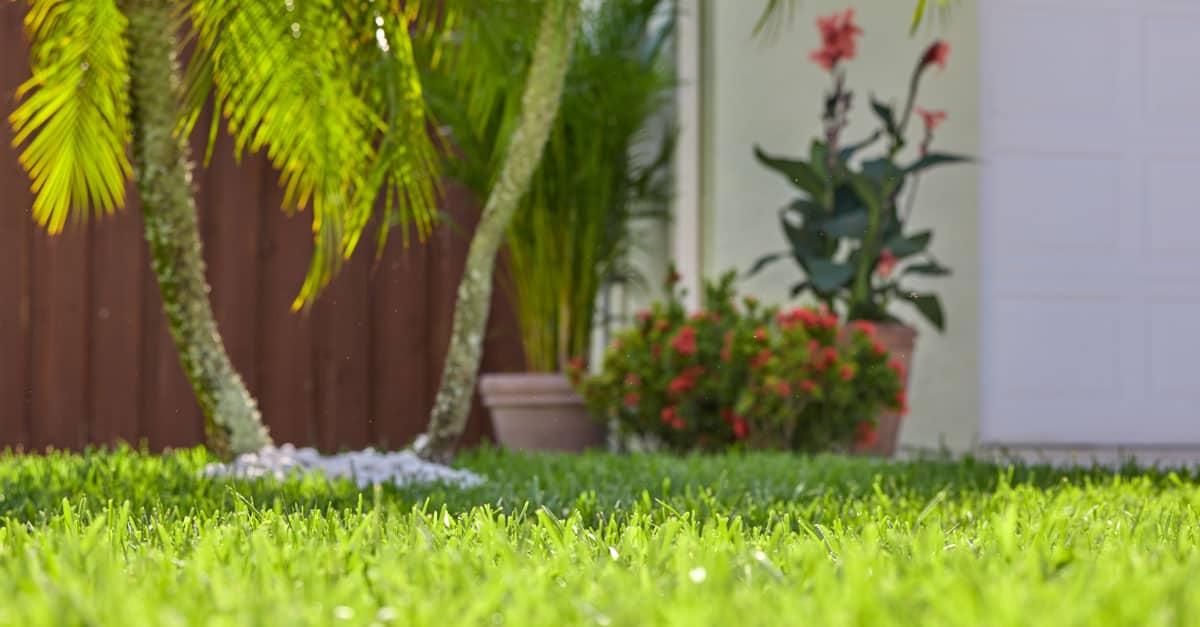As the Planet Warms: 10 Ways Lawns Offer a Sustainable Path Forward

With global warming intensifying and 2024 marking the warmest year on record, the need for climate-conscious landscaping practices has never been greater. Fortunately, nature offers resilient solutions.
Drought-tolerant turfgrasses like clover and buffalo grass, when integrated with native plants, empower homeowners and communities to harness the vital environmental benefits of lawns and green spaces in our changing world.
Here are 10 powerful ways lawns contribute to a sustainable future and enhanced well-being:
1: Sequestering Carbon
Natural turfgrass is a highly effective carbon sink, playing a crucial role in mitigating climate change. Its extensive leaf surface area surpasses that of many other plants, making it a carbon sequestration powerhouse.
Impressively, a well-nourished lawn can capture twice the amount of carbon from the atmosphere in a single year compared to a tree over a decade.
2: Combating urban heat islands
The increasing prevalence of heat-absorbing urban landscapes, dominated by concrete and asphalt, exacerbates rising temperatures, creating dangerous heat islands.
In contrast, well-maintained lawns and landscapes act as natural cooling systems, reducing surface temperatures by a significant 30-40 degrees Fahrenheit compared to bare soil, and 50-70 degrees Fahrenheit cooler than streets and driveways.
3: Mitigating drought
Lawns play an active role in drought mitigation by optimizing water infiltration and promoting sustainable water management. Integrating more green spaces with trees, native plants, and natural turfgrass in urban areas fosters the development of “sponge cities,” which are better equipped to absorb rainfall and filter water efficiently, enhancing overall drought resilience.
4: Minimizing flood risk
Natural turfgrass and other green elements act as natural buffers against heavy rainfall, reducing the strain on stormwater runoff systems and mitigating flooding.
A 5,000-square-foot natural grass lawn on sandy-loam soil can capture approximately 2,000 gallons of rainwater before runoff occurs, effectively slowing the flow of water during intense storms and preventing erosion.
5: Increasing oxygen production
Lawns are significant producers of life-sustaining oxygen through the process of photosynthesis.
A 2,500-square-foot lawn generates enough oxygen to meet the daily needs of a family of four, while a single acre of natural turfgrass produces enough oxygen for 64 people every day.
6: Improving air quality
Natural turfgrass acts as an air purifier, effectively trapping dirt and dust particles, leading to a cleaner environment and improved air quality. Airborne dust not only poses respiratory risks but can also reduce urban sunlight by up to 15 percent in the form of smog.
7: Reducing noise pollution
Turfgrass is a natural, acoustically absorbent material that effectively dampens sound waves interacting with the ground.
Grassy slopes and greenbelts along roadways can reduce noise levels by a noticeable 8-10 decibels, providing significant relief for those living near busy traffic or in densely populated urban areas.
8: Fostering healthier communities’
Accessible green spaces are vital for promoting physical activity, relaxation, and social interaction within communities. The decline or absence of robust green spaces can negatively impact productivity, increase susceptibility to anxiety, and contribute to a decline in overall mental health.
9: Providing safer playing surfaces
Natural turfgrass offers a significantly softer and more shock-absorbent surface for recreational activities and sports compared to artificial turf. The NFL Players Association has recognized the lower incidence and severity of injuries on natural grass, advocating for the conversion of artificial practice and game fields.
10: Promoting biodiversity
Lawns and green spaces contribute to biodiversity by providing essential habitat for various wildlife and plant species. Diverse green areas also attract crucial pollinators, such as bees, and the natural decomposition of grass enriches the soil, adding over 6,500 pounds of organic matter annually to an area the size of a football field.
View original content here.
About ScottsMiracle-Gro
With approximately $3.6 billion in sales, the Company is the world’s largest marketer of branded consumer products for lawn and garden care. The Company’s brands are among the most recognized in the industry. The Company’s Scotts®, Miracle-Gro®, and Ortho® brands are market-leading in their categories. The Company’s wholly-owned subsidiary, The Hawthorne Gardening Company, is a leading provider of nutrients, lighting, and other materials used in the indoor and hydroponic growing segment. For additional information, visit us at www.scottsmiraclegro.com.

